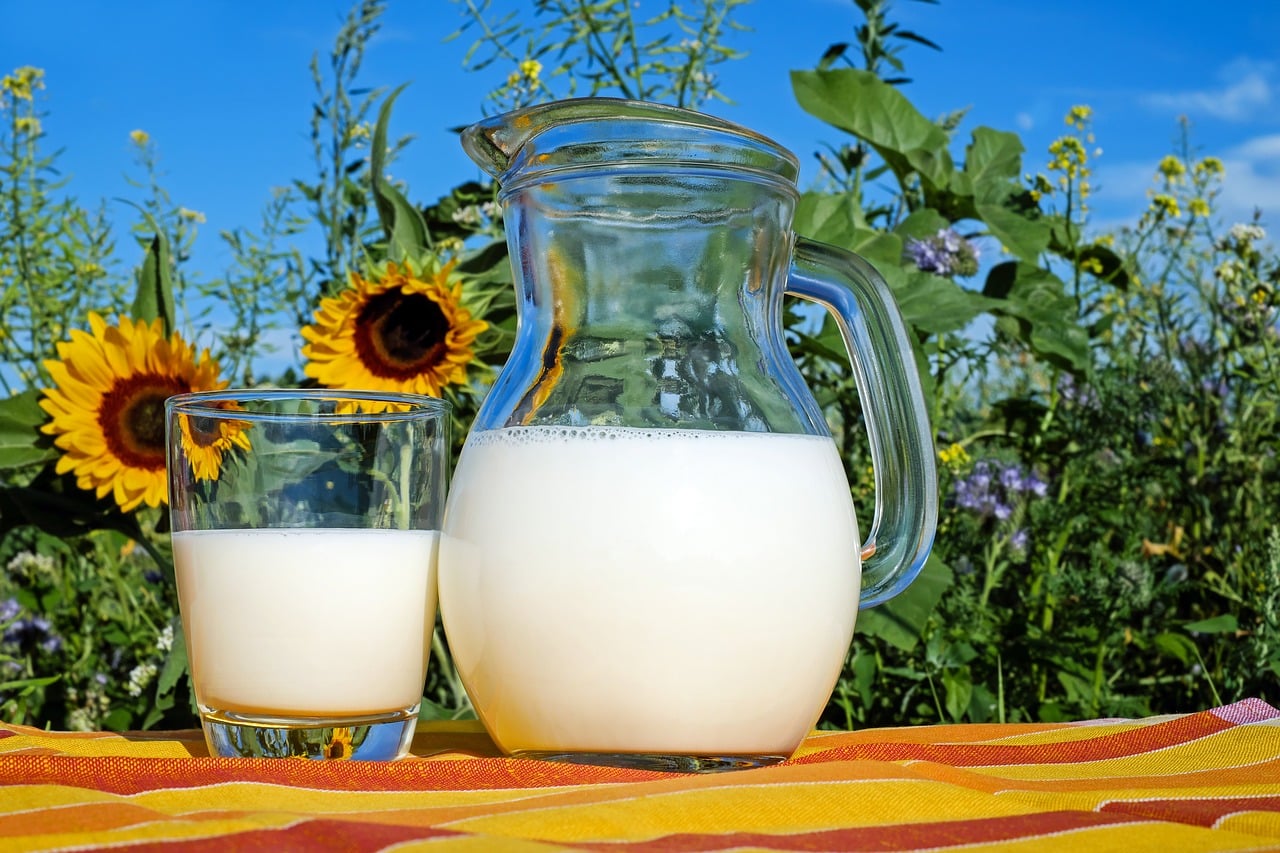What is the difference between goat milk and cow milk? We get this question all the time, and I do mean ALL the time. While we obviously believe raw milk is FAR superior to pasteurized, and we are living examples of its health benefits. Visitors
to the farm sometimes enjoy a “taste test” of goat milk and we always pair it with a sample of cows milk.
We have one precocious visitor last year, a 12-year- old boy who LOVED milk and considered himself a connoisseur of dairy. Those were his exact words. I explained about the differences and challenged him to tell the difference between goat milk and cow milk. He assured me proudly that we could not fool him, that he KNEW milk. I admired his youthful confidence. He was absolutely convinced that he could pick out the goat milk. Long story short, he identified the goat milk as cow’s milk. Now the goat milk he tasted was FRESH and raw and higher in fat than the pasteurized cow milk.
So what are the actual differences? Let’s start by looking at the individual components in 1 single cup of milk. I have highlighted the superior number in each group.
Cow Milk vs Goat Milk
Protein 9 g 8 g
Carbohydrates 11 g 11 g
Fat 8 g 10 g
Vitamin A 252 g 485 g
Vitamin B6 0.10 mcg 0.112 mcg
Vitamin B12 1.1 mcg 0.2 mcg
Vitamin C zero 3.2 mg
Vitamin D 100 IU 32 IU
Vitamin E 0.15 IU 0.2 IU
Folate 13 mcg 2.7 mcg
Calcium 275 mcg 325 mcg
Magnesium 23 mg 34 mg
Selenium 9 mcg 3.4 mcg
Important Differences
So while very similar there are some important differences. Cow’s milk contains fat molecules that are very large in size, which makes it more of a challenge to digest, taking up to 2 hours to make its way through our digestive system. In addition, the cream from cow milk separates out and floats to the top. In order to get them to mix, they are forcibly and mechanically homogenized. It might surprise you to know that cow’s milk is ranked as the 3 rd highest allergen for children.
Lactose intolerance
Alternatively, goat milk contains very small fat molecules which allows it to stay naturally homogenized, very little cream will rise to the stop of goat milk, it stays blended throughout the milk. This makes it easier for lactose intolerant people to consume and not experience any type of allergic reaction. When babies struggle with mother’s milk or formula, the go-to of many doctors is goat milk. It is closer to human breast milk than any other. There is an expectation from many people that goat milk will have a “goaty or musky flavor”. We’ve been taught to believe that goats are smelly animals and this odor taints the milk. As a general rule, goats do not carry a pervasive odor. The romantic male goat urinates on his beard as an attractant to any females who are in heat. If you have the misfortune of meeting a male during the breeding season, you will believe wholeheartedly that goat milk must have an odor and avoid it like the plague. However, on most farms, the male’s beard and the does udder never the twain shall meet.
Several things affect whether the goat milk will have the “farm or musky” taste. The breed of goat and the resulting fat content for that breed, the method used to milk the goat, the cleanliness of the equipment including the hands of the milker, filtering and most importantly the speed with which the milk is chilled. Warm milk breeds bacteria, so the faster the milk is chilled and kept cold, the less of a taste there will be. In addition, the fat content affects this as well. Nigerian Dwarf milk fat content ranges from 6% to at least 10%, and we have seen higher. This is why Nigerian Dwarf milk has less “goaty” flavor, even after multiple days in the refrigerator. So when our young gentleman visitor tasted the goat milk, there was no musky taste only the
creamy, rich goodness he mistook for whole cows milk.
From a nutritional standpoint, cow and goat milk is very, very similar. To be fair, cow’s milk is higher in folate and B12. However, these sourced otherwise in our diet. The superior digestibility of the goat milk helps those who are lactose intolerant and is less allergenic overall.



Comment
Very interesting! I drink raw cow’s milk that I get from an Amish farmer. I used to drink store bought skim milk. I made the transition from skim milk to whole milk very easily and never plan to go back. Thanks for the information about goat’s milk. I did not know these differences. I have yet to taste goat milk but am definitely interested in trying it now!